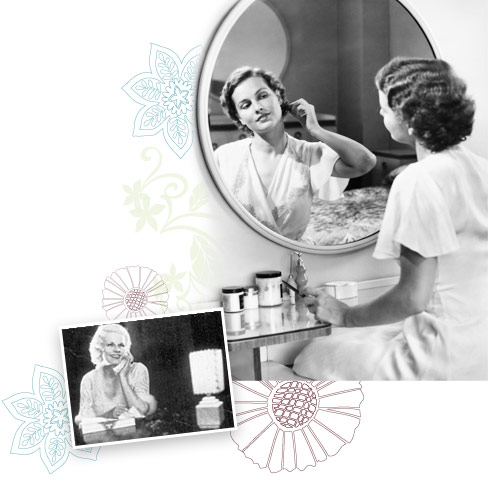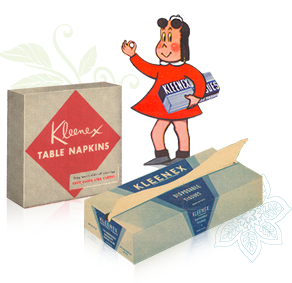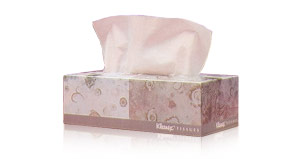
Discover how Kleenex® tissue traveled from a laboratory to every household in America
In the early 1920s, Kimberly-Clark, a paper manufacturer, had developed creped wadding for its first ever consumer product, Kotex®. Not long after, scientists were able to make a softer crepe by changing the ingredient blends and using different pulps. Thus the idea of Kleenex® facial tissues was born.
At first, it was envisioned as a disposable cleansing tissue. The team considered women’s needs, including the use of cosmetics, with hopes that the new cleansing tissues could be a convenient replacement for the unsightly "cold cream towel" that hung in many 1920s bathrooms.

In 1925, the first Kleenex® tissue ad appeared in the Ladies Home Journal as the new secret of keeping a pretty skin as used by famous movie stars...

The tissue was trademarked Kleenex® and launched in 1924 as a cold cream or makeup remover; a disposable substitute for face towels.
In 1925, the first Kleenex® tissue ad appeared in the Ladies Home Journal as "the new secret of keeping a pretty skin as used by famous movie stars..." Soon, ads were in all the major women's magazines. In 1927, the ads began featuring screen and stage stars to endorse their latest beauty secret.
Around this time, Kimberly-Clark's head researcher started using the tissues in place of a handkerchief to help with his hay fever symptoms. He conceived the simple but brilliant idea to market Kleenex® tissues for sneezing and other nose needs.

The concept struck and in 1930, the idea of Kleenex® tissue as a handkerchief substitute was launched. Sales of Kleenex® tissues doubled the first year with this new handkerchief strategy. Instead of being a product just for women, it now served men, women and children, too.
Since Kleenex® tissues came on the market in 1924, it has been the No. 1 facial tissue brand in the world. Today, it is a global icon. For a product originally made of excess material, it certainly exceeded everyone's expectations!




